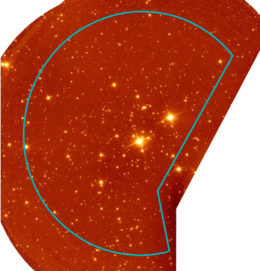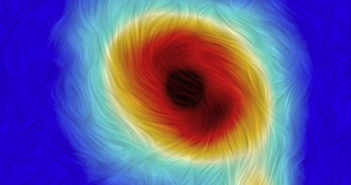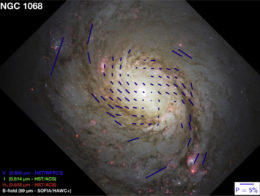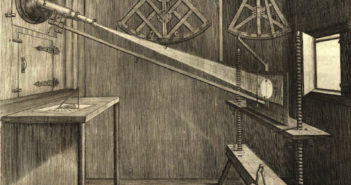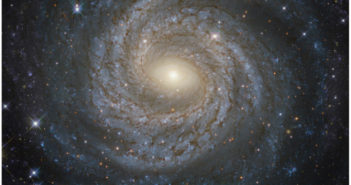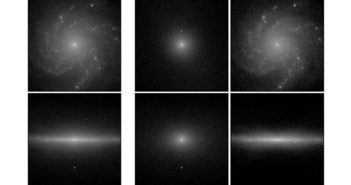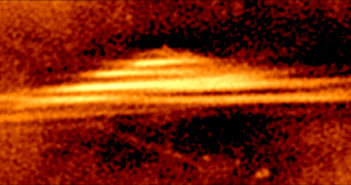
Featured Image: Playing Harps in the Radio Sky
Look closely at this radio image (click for the full view!) and you might see why scientists have named this phenomenon a radio “harp”. These remarkable near-parallel lines of emission — which are seemingly sorted by length, so that they resemble a harp with radio-emitting strings — span several light-years and can be spotted in the center regions of our galaxy. In a new study led by Timon Thomas (Leibniz-Institute for Astrophysics Potsdam), a team of scientists argues that this cosmic music is caused by a massive star or a pulsar (a magnetized neutron star) plunging through an ordered magnetic field in the galactic center. As the star crosses (moving upward, in the image above) bundles of field lines, it discharges high-energy cosmic rays that travel in either direction along the bundles, emitting radio waves. Thomas and collaborators use observations of these radio harps to study how cosmic rays propagate along magnetic fields. To learn more about what they found, check out the article below.
Citation
“Probing Cosmic-Ray Transport with Radio Synchrotron Harps in the Galactic Center,” Timon Thomas et al 2020 ApJL 890 L18. doi:10.3847/2041-8213/


